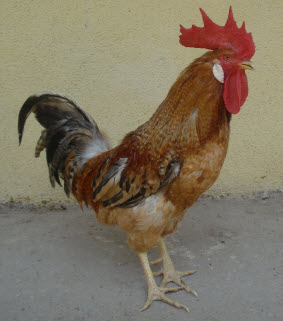Major efforts have been taken in producing high performing disease resistant strains of Chicken, Japanese quail, Turkeys and Guinea fowl. Developed ten new strains at this Institute namely Nandanam Chicken I, Nandanam Chicken II, Nandanam Chicken III, Nandanam chicken IV, Nandanam quail I, Nandanam quail II, Nandanam quail III, and Nandanam Turkey I, Nandanam Turkey II, Nandanam Guinea fowl I. Package of practices for turkey farming standardized.

NANDANAM CHICKEN I

NANDANAM CHICKEN II - BROILER

NANDANAM CHICKEN IV - MALE

NANDANAM CHICKEN IV - FEMALE


NANDANAM TURKEY - I

NANDANAM TURKEY - II
